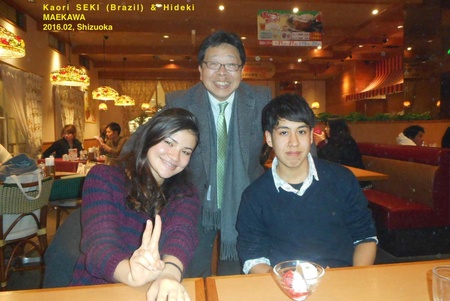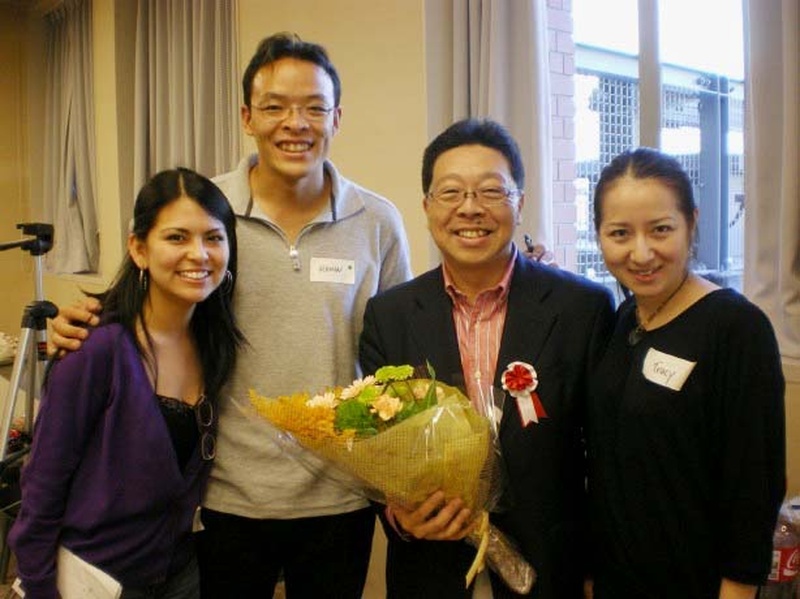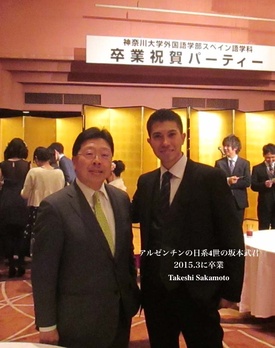"Japanese-descendant dekasegi" workers from South America began coming to Japan in the late 1980s, and after the Immigration Control Act was revised in 1990, they began entering in large numbers. At first, many Japanese-descendants came alone, but gradually they began to consider staying in Japan longer, and began to bring their families over or start homes here. As a result, the number of children attending Japanese schools has increased, and since around 2005, foreign support offices have been receiving more enquiries about entering high school.
Around the same time, the issue of children of Japanese descent, mainly Brazilian nationals, not attending school (primary and junior high schools) became a hot topic. One factor behind the increase in out-of-school children is that the right and obligation to a compulsory education stipulated in Article 26, paragraph 1 of the Constitution does not apply to foreigners, but local governments and private organizations in areas with large foreign populations are actively supporting their schooling. For example, boards of education have dispatched interpreters and staff to support teachers, and websites have been established to translate frequently used materials (such as notices from schools) into multiple languages to make communication with parents as smooth as possible.2
Thanks to such support and efforts, it can be assumed that most Nikkei children are now able to complete compulsory education. However, compared to Japanese people, the high school enrollment and graduation rates are still low, at around 50%, 3 . However, the number of Nikkei children going on to university is definitely increasing, and it is hoped that this situation will gradually improve in the future.
Since 2007, I have been teaching Spanish as a part-time instructor at several universities in the provinces, and since around 2010, I have met students of Argentine, Brazilian, and Peruvian nationality through the classes I teach (Business Spanish, Spanish Expressions, etc.). It was also around this time that I began to have more opportunities to meet students from Latin America who were not international students when I gave one-off special lectures at universities in Tokyo.
When we talked to them, we learned that all of their parents came to Japan as dekasegi workers in the 1990s, and they themselves attended Japanese public schools, and many of them were young people who overcame various hardships and difficulties to continue their education. They had difficulty communicating with their parents, or their teachers did not understand their intentions or cultural differences, but at such times, they were able to carve out their own path thanks to a small opportunity or the help of a teacher who took an interest in them. One student even won a prize in an English debate competition that he happened to participate in, and this experience of being able to make up for the weaknesses of Japanese people gave him confidence and allowed him to move forward.
I have worked with nearly 20 Japanese children so far, and nearly 70% of them are doing great things in society. Of course, even if they successfully graduate from university, it doesn't mean that they can get a good job, just like other Japanese students, but there is no doubt that receiving a higher education is an advantage when it comes to finding a job.
Some researchers, without really looking at the reality, simply say that foreign children in Japan are bilingual and multicultural, but this is not necessarily true. For Japanese children, it is not easy to master not only everyday conversation in the language they are studying, but also reading comprehension, conversation, and writing skills. Furthermore, they cannot read newspapers in Japanese or understand their contents unless they at least graduate from high school.
Many of the students I met learned Spanish through language classes. Although it may have been their parents' native language, it is still their first foreign language, and they learn Spanish with Japanese as the base. For Japanese children who have studied Japanese since compulsory education, Japanese is their mother tongue, and the language of their parents' country of origin is merely a foreign language. Even if a student speaks Spanish at home, the reality is that they only have a very limited Spanish vocabulary. Unless their parents are enthusiastic and they have taken correspondence courses in Spanish4 , it is difficult to acquire proper expression skills (speaking and writing). Some students have decided that the Spanish they learn in Japan is insufficient, and have gone to Peru to "study abroad" and take Spanish courses for foreigners offered by local universities. Whether it is Japanese or Spanish, it takes many years of effort to receive education in that country.

The literacy rate in Latin American countries is over 90 percent, but the high school completion rate is only around 70 percent in wealthy urban areas and less than 50 percent in rural and low-income areas. Unfortunately, there are still many people who have not even completed elementary school. The biggest problem is that the content of subjects in secondary education in these countries is very poor, and there are few vocational schools after high school. Universities are not socially recognized, except for a few prestigious national and private universities, and there is no guarantee that those who graduate from these universities will be able to find a good job. The human resources that higher education institutions produce have a huge mismatch between their academic fields and what society and companies are looking for. Even after graduating, there are no jobs that people want to do. This is the reality of the huge gap between education policy and industrial policy.
Looking at basic educational standards, the OECD's Programme for International Student Assessment (PISA) (2015) ranks Japan and Singapore highly, while in South America Chile ranks around 50th, and the other countries around 60th.5
In Japan, 98% of young people complete compulsory education, 96% go on to high school, 54% to university, and 16% to vocational school, meaning that 70% of young people receive higher education. Of course, not everyone goes to a good school and gets good grades, but it can be said that they have achieved a fairly balanced level of education.
For the children of immigrants, receiving higher education in Japan is a great opportunity. As of 2017, the total number of international students was 290,0006 , with a particularly dramatic increase in the number of students from Asian countries, especially Vietnam, in recent years. Many of these students come to Japan at their own expense, make great efforts to study Japanese, and advance to university, with some even going on to graduate school. After obtaining their degrees, some find employment in Japan, some in their home countries, and some even work in other countries7 . The hiring methods, promotion systems, and wage structures of Japanese companies make it difficult to secure such talent, but the number of people looking to work in Japan is increasing.
Most of the Japanese-Americans I have met have gone to college through a great deal of effort and dedication on the part of their parents. Some of them have significant debts .
In fact, I have attended as a lecturer the "High School and University Entrance Seminars" organized by several Peruvian communities, and in many cases, the obstacle is the parents' lack of financial resources. Many parents still have regrets about returning to their home country, and many have problems managing their household finances, but the biggest problem is that they generally do not have the habit of saving, and in particular, they have little awareness of the financial burden (investment) on education.
In Japan, public high schools are free for students to go to, but there are associated costs that parents must cover. When it comes to going to university, students must also consider the cost of cram schools for entrance exams9 . Even if they do go to a public university, the four-year tuition fee alone will cost 3 million yen10 . If they can save even half of this, the possibility of going to university will increase. However, some students end up relying on debt to cover all expenses, including some living expenses. When this happens, they are forced to pay off loans even after entering the workforce, into their mid- 30s11 . This causes them to give up on studying abroad or changing jobs, and sometimes becomes an obstacle to starting a family. The same is true for ordinary Japanese students.
That is why you need to think more seriously about going to college, and also consider financial resources in advance. It is a very risky move to be attracted only by visiting a college campus and decide on a major based on the momentum and motivation of the moment. You need to calmly consider what you will do when you enter the workforce.
I hope that in the future, they will hone their abilities to match the skills and talents that the labor market demands, and carve out their own path with the value of being Japanese descendants. If you are interested in something even if you are not good at it, it may not be a bad idea to take on the challenge while considering various perspectives and the opinions of others. Also, just like other Japanese students, it is a great choice to quietly cherish the opportunities that are given to you at each moment. In Japan, even if you do not graduate from a four-year university, depending on the field, it is often possible to find employment after attending a two-year vocational school12 . From there, it is entirely possible to obtain qualifications within the industry and aim to improve your technical skills and be promoted.
I have tried to talk to and give advice to as many of the Japanese-Argentine children I have met. As a second-generation Japanese-Argentine, I was able to receive higher education and come to Japan as a government-sponsored student thanks to the support of many seniors, teachers, and wonderful parents. I understand that not everyone can receive a high level of education, but if you have gone to university, I hope that you will make the most of the opportunity and make the choice to demonstrate your abilities.
Notes:
1. Article 26, paragraph 1 of the Constitution: All people shall have the right to receive an equal education according to their ability, as provided by law. Paragraph 2: All people shall have the obligation to have their children receive a basic education, as provided by law. Compulsory education shall be free of charge. (Excerpt from the colloquial "Constitution," p. 116, Jiyukokuminsha, 2004)
"All nationals" refers to "nationals," that is, Japanese nationals, and does not apply to children of foreign nationality. Nevertheless, in reality, administrative authorities are responding quite proactively.
2. The CLAIR (Council of Local Authorities for International Relations) website provides information on living in Japan in multiple languages. Clicking on the education section will give you detailed information on related procedures and characteristics of each grade.
3. Depending on the survey, the current high school enrollment rate is between 50% and 60%.
Takanori Tanaka, " High school enrollment rate for foreign children remains at 60% - Supporters investigate entrance exam system in hopes of correcting disparities " (Yahoo!News, January 30, 2017)
4. For Peruvian children and students in Japan, there is PEAD KYODAI (Programa de Educación a Distancia) - a basic curriculum for elementary and junior high schools run in Japan by PEAD Unidos .
5. PISA is conducted every three years and surveys 540,000 people in 72 countries.
National Institute for Educational Policy Research (NIER)
6. As of June 2017, according to the Ministry of Justice's " Statistics on Foreign Residents ," there are 291,164 people residing in Japan on student visas, with the largest number being Chinese with 114,967, followed by Vietnamese with 69,565. There are 455 people from Brazil and 128 people from Peru.
7. In recent years, foreign students seeking employment in Japan account for 60% of the total, but only about 20,000 students per year actually receive job offers and change their residence status.
" What is the employment rate for international students? Latest information for 2016 " (Global Power University, November 24, 2017)
" Why is there no progress in finding employment for foreign students? " (NHK News, July 14, 2016)
8. Although it is called a "scholarship," it must be paid back later, and is the same as an educational loan. 40% of Japanese university students, both public and private, borrow money from financial institutions. Among students who take out loans, 70% go to private universities with high tuition fees.
Yoko Kato, " What you can do to avoid suffering from scholarships - (1) What you need to know about the harshness of repayment " (Mynavi News, June 3, 2016)
9. Even for public elementary schools, the cost of school lunches, extracurricular activities, books, etc. is about 350,000 yen per year. For junior and senior high schools, the cost is 400,000 yen per year.
Yoko Kato, " How much does it cost to live in elementary school for six years? - Introducing a system to help households " (Mynavi News, March 9, 2017)
In addition, it costs 20,000 to 30,000 yen per month for cram school fees and other extracurricular activities.
Yoko Kato, " How much do cram schools and lessons cost? - We also explain the "times to be careful" when you need money! " (Mynavi News, October 13, 2016)
10. Japan Finance Corporation's " Survey Results on Educational Expenses "
11. Kenji Yasuda, " 'Scholarship Hell' is Real! One in Two Students is in Debt " (President OnLine, March 18, 2017)
12. Of the 1.06 million high school graduates, 54% (570,000) go on to university (including junior college), and 16% (170,000) go on to vocational schools. These are generally two-year courses, but depending on the specialty or major, the competition is tougher than the university entrance exam, and students must study almost full-time and do practical training to graduate. It costs around 2 million yen for two years, but students can acquire quite high levels of practical skills.
Vocational school newspaper
Knowledge Station
© 2018 Alberto J. Matsumoto








